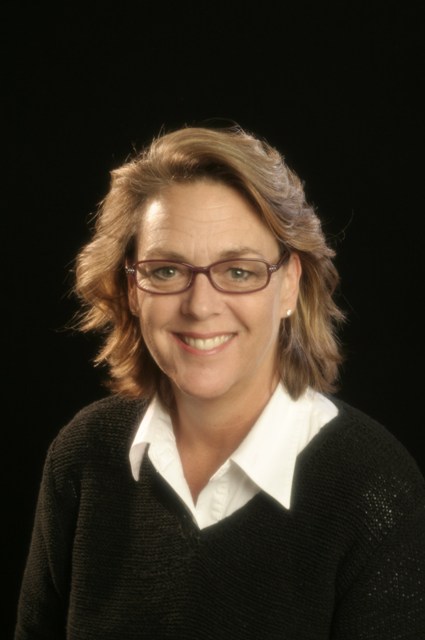Dr. Judy Neall Epstein is a naturopathic physician and the Clinical Director of the Compassion & Choices End-of-Life Consultation Program. Dr. Epstein spent ten years in private practice before accepting her position at Compassion & Choices, where she works with counselors and clinical coordinators to advocate for the terminally ill and provide education and support for end-of-life planning. We spoke with Dr. Epstein about advance directives, as well as the POLST, a form that people are finding increasingly useful in end-of-life planning.
Liz: To start off, let’s discuss advance directives. What is an advance directive, and what different types of advance directives are currently available?
 Judy: “Advance directive” is really a generic term for a couple of different things. The term generally includes a living will, which is a written statement of preferences, and a durable power of attorney for health care or a health care proxy assignment. Those two parts combined are an advance directive. There are many different kinds, and different states have different laws, and different states honor certain kinds of statements, and so it’s actually very state-specific. But there are general things shared by all the variations, like “would you want a ventilator if you couldn’t breathe on your own?” and things like that.
Judy: “Advance directive” is really a generic term for a couple of different things. The term generally includes a living will, which is a written statement of preferences, and a durable power of attorney for health care or a health care proxy assignment. Those two parts combined are an advance directive. There are many different kinds, and different states have different laws, and different states honor certain kinds of statements, and so it’s actually very state-specific. But there are general things shared by all the variations, like “would you want a ventilator if you couldn’t breathe on your own?” and things like that.
Our website has all of the individual states and the advance directives specific to that state, which is important to know. You can buy a general advance directive form at a stationery store, and there are generic forms that attorneys will use when people are estate planning. But I think it’s nice to know that there are state-specific forms available, which can make sure wishes are honored in each individual state.
Liz: What are some of the specific differences between state forms, and how can one navigate these differences, if, for example, one travels between states?
Judy: I couldn’t say all the specifics, but for example there are some states that presume that a person would want artificial food and hydration if they couldn’t swallow on their own, and they will just insert a feeding tube regardless of what an advance directive says. It’s not in their state-specific form, though it probably would be in a generic form. So there’s funny little things like that: if you wanted that in your state-specific form, you would need to say “in the event I could no longer swallow on my own, I would not want a feeding tube.”
The thing that’s interesting is, advance directives are really only usable when they’re available during emergency healthcare situations. So the piece that is important, I think even more than writing down and filling out a form, is making sure someone knows exactly what you want and don’t want. We really talk to people a lot about this: fill out the form, but sit down with the person who’s your proxy and all your family members and go through it step by step. “In the event of this, I do want this,” etc., because they are the ones who are going to be making the decisions.
Let’s say you have a California advance directive and you’re in Oregon, and you end up in the hospital; if your partner or child is there with you, they can speak up for you while someone finds that advance directive in California and sends it over. Medical professionals will listen to the family and medical proxy in lieu of an advance directive.
The most important thing is having the conversation. Because if it’s in writing, that’s great, but… if you end up in the hospital with some kind of critical event, it’s a very emotional and stressful time. And if [your family] haven’t heard in your words that you don’t want to be on a ventilator and don’t want artificial food and water, but only look at the form and see the box checked, they might think, “Why would they not want it?” And because of the emotional attachment, they might not be able to say, follow this order, I’m sure that’s what they wanted.
Liz: Now, I want to turn our discussion to the POLST. Is the POLST considered an advance directive?
Judy: It’s in a different category. A POLST stands for “Physicians Orders for Life-Sustaining Treatment.” It’s a form that is signed by your physician, agreeing to and stating your preference for what you want to happen. It’s often used as a Do-Not-Resuscitate form, but it goes a little bit further than the DNR.
People generally keep them in their house—it’s really only meant for people who are quite elderly and frail or very sick or have a terminal illness, people who are in a situation in which they could very easily have an event that lands them in the hospital. Often, when people are that ill, they don’t want to be resuscitated; if they are at home and have that fatal heart attack, they don’t want emergency personnel to be called in to resuscitate them.
Emergency personnel will always look for the POLST on the back of the front door or on the refrigerator if they do indeed get called. Unfortunately, the law doesn’t hold them to it; but at least it makes it clear what a person wants, and makes the odds of having that followed much more likely because it is stated and signed by a physician.
Emergency personnel in particular often feel they have to do whatever they can if they are called. So we often advise people who have a POLST in place that states “do not resuscitate” to advise family members not to call 911! If emergency personnel come, they’ll be compelled to do something, probably from a liability standpoint.
So basically, a POLST is different in that it is signed by a physician, and signed by the person themselves. It doesn’t replace an advance directive, but it is a supplement.
Liz: What are the advantages to having a POLST over advance directives? Is it advisable to have both?
Judy: Sure, yeah. The forms work in tandem with each other sometimes. But if someone is really very ill or frail or terminal, a POLST will answer immediate questions about what’s really going to save them or not, and having a doctor sign off on a POLST gives the document a lot more weight in the eyes of other medical professionals.
Another thing about advance directives that varies between states is that some states require that a notary public signs the document in addition to you. Other states require witnesses only, while others will honor or acknowledge an advance directive that’s only signed by the patient themselves. But because the advance directive is only signed by these people, whereas the POLST is signed by the physician, this gives it more weight. People see it as a sign that coercion was less likely, and that it’s probably pretty likely that the person really wanted that and asked for that.
Liz: Are there differences between states in how the POLST is administered and dealt with? Again, how can one navigate these differences?
Judy: It’s much more straightforward than the advance directive: it’s a 1-page document, whereas an advance directive is an 8- or 9-page document, so there’s a lot less room for confusion on a POLST. It generally just talks about resuscitation options and antibiotic use and artificial fluids and nutrition. So there’s not as much variation. The thing that’s interesting is, in many states they don’t even have a POLST program. But some states, like Oregon, have a POLST registry: once a physician has filled out a POLST on one of their patients, it goes into the state registry, so no matter where you are, in any hospital or medical facility, they can look up and see what the POLST orders are.

Talk with family members about your plan before an emergency event takes you to the hospital. Photo credit: Megan Elizabeth Morris.
There’s really quite a movement right now to get other states to adopt that kind of thing. There’s actually a great website where people can look up their state, run by the Oregon Health Sciences University bioethics department.
In states where there is no POLST program, we tell people you can still fill one out or try to get your doctor fill one out, but you must know that medical personnel don’t know to look for it. That’s when it would be especially important to have an advance directive in place, because those are known nation-wide and every state has one. The POLST is a more recent development of the last decade or so. So if people want one, and the state doesn’t have one, they can go to this website and educate their physicians and say, I’d like for you to do this.
But the good news is, an advance directive will kind of kick in behind a POLST, and still be there, so you will still have something in place and will not be a total victim to circumstance.
Liz: Finally, what advice do you have for our readers regarding end-of-life planning, and navigating the advance directive and POLST process?
Judy: Fill out the forms—everyone over 18 should do it. People don’t just die from sickness and being old; they die from car accidents and bike accidents and ski accidents and everything else.
And I’ll say it again: I would definitely first find out what is the story in your state of residence through the OSHU website or through our website, but most important is having the conversation. Because if it’s in writing, that’s great, but you should still sit down with your family and review what’s in writing. Otherwise, if you end up in the hospital with some kind of critical event, people get really upset. It’s a very emotional and stressful time. And if they haven’t heard in your words that you don’t want to be on a ventilator and don’t want artificial food and water, but only look at the form and see the box checked, they might think, “Really? I didn’t know! Why would they not want it? They might come out of this in two years!” And because of the emotional attachment, they might not be able to say, follow this order, I’m sure that’s what they wanted.
But if the conversation has been had, and everyone has talked about it, then as a family we can say we know they didn’t want a ventilator, it’s very clear on their forms, and we need to honor that wish. Even though they are in a very vulnerable situation and speaking for you, they can do that much more confidently and guilt-free if they’ve had that conversation. So my advice would be, have that conversation. Everyone should fill out the forms, and everyone should talk to their families.
Liz: Great advice. Thanks so much for speaking with us!

 What is Advance Directive? – An Interview with Judy Epstein
What is Advance Directive? – An Interview with Judy Epstein


 Funeral Favors Offer Visitors a Tangible Memento
Funeral Favors Offer Visitors a Tangible Memento
 “Comeback” by Prince
“Comeback” by Prince
 “Other Side” Documents Woman’s Fight To Die As She Wishes
“Other Side” Documents Woman’s Fight To Die As She Wishes














